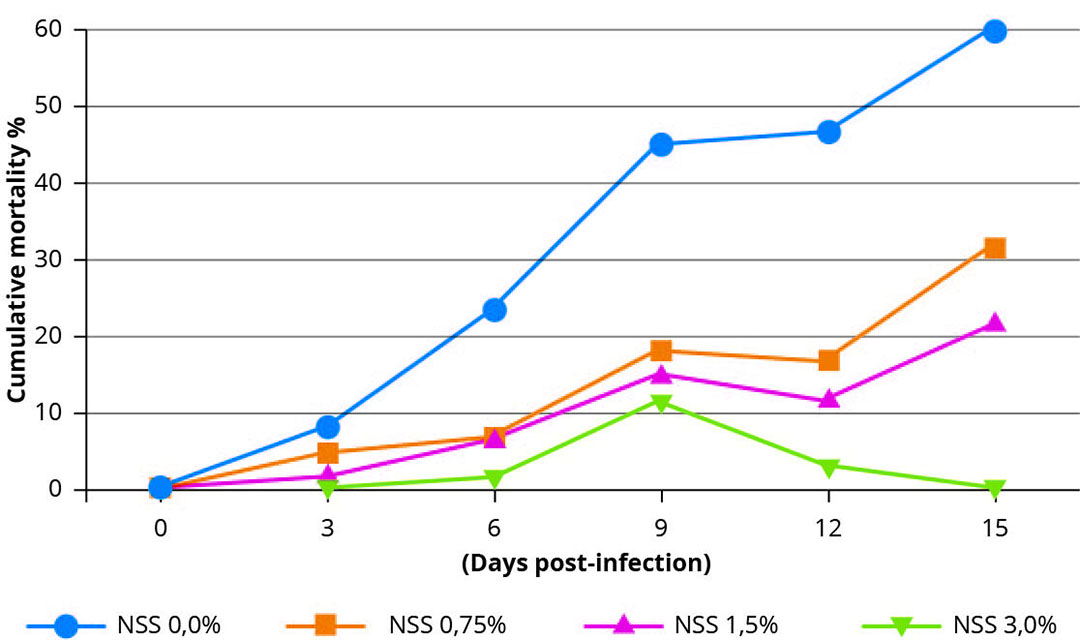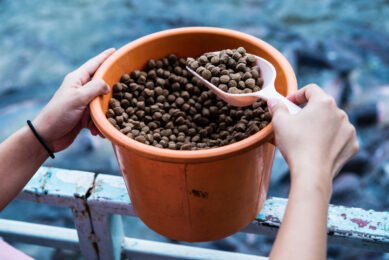Health benefits of microalgae-fortified Tilapia diet

A blend of microalgae species Nannochloropsis oculate, Schizochytrium and Spirulina offers a range of health and growth benefits when fortified in Tilapia diets, a new study reviews.
Due to the intensification of production, Nile tilapia (Oreochromis niloticus) is usually exposed to multiple biological, physical, environmental, and chemical stressors that can impair their health, reduce their overall performance, and increase their susceptibility to diseases. Exposure to extrinsic stressors can promote extreme production of reactive oxygen species (ROS), which induces oxidative stress — leading to lipid peroxidation, DNA damage, impaired cell function, and ultimately necrosis or apoptosis.
Microalgae as an alternative additive
Along with that, the increased awareness of omega-3-PUFAs’ health benefits has triggered the introduction of alternative additives in aqua feed that cause not only modulation in the fish immune response but also fortification of their fillet. It has been shown that many microalgae species have several health-promoting impacts, particularly in the prevention and treatment of several diseases owing to their composition from natural antioxidant compounds or production of long-chain PUFAs. Among these important microalgae are Nannochloropsis, Spirulina, and Schizochytrium species, which are high in n-3 PUFAs such as EPA and DHA and are important for sustaining fish health and imparting neurological, cardiovascular, and anticancer benefits to humans.
Although many previous studies have investigated the impacts of microalgae separately on fish performance and health parameters, few studies have evaluated the effectiveness of a combination of these microalgae as a dietary supplement for fish.
Tilapia study
In a study , the role of a microalgae mix containing Nannochloropsis oculate and Schizochytrium and Spirulina species was assessed on Nile tilapia’s performance, fillet antioxidant stability, immune response, and disease resistance. The 3 microalgae (NSS) were added together as a microalgae mixture containing equal proportions (1:1:1) of 3 different levels (0.25%, 0.5%, and 1%) to make a final concentration of 0.75%, 1.5%, and 3% (w/w) in the experimental diets. One group, the NSS-0 group was fed the microalgae-free diet and used as the control.
Improved growth performance
Results showed that groups fed NSS, especially at higher levels, showed improved weight gain, protein efficiency ratio and FCR, which corresponded with the enhancement of digestive enzyme activities (Table 1). As shown in Table 1, significant elevations in the levels of chymotrypsin, amylase, and protease digestive enzymes were noted in NSS-fed fish compared to the fish fed the microalgae-free diet. These positive outcomes on growth performance parameters could be attributed to the high contents of microalgae DHA and EPA fatty acids which are linked with the improved health condition of fish, especially those reared under intensive farming conditions. The contents of EPA and DHA in the fillet were significantly increased with increasing NSS levels. DHA and EPA fatty acids are engaged in important roles such as activation of insulin-like growth factor-1 and Akt-mTOR-p70S6K pathway that positively impact the growth and metabolic regulation of fish.
Immunity and antioxidant status
It is well-documented that fish health and immunity are greatly connected to the antioxidant defence system. Exposing fish to stressful conditions that are associated with oxidative stress under intensive farming can trigger higher ROS production resulting in extensive cell damage. The antioxidant defence system supports fish to retain endogenous ROS at minimal levels and mitigates the oxidative damage provoked by ROS high reactivity.
Significant elevation in IgM levels and RBCs’ counts were recorded in the fish supplemented with the 1.5% and 3.0% NSS diets. In line with that, the dietary supplementation of NSS at 0.75%, 1.5%, and 3% significantly enhanced the serum lysozyme activity in a dose-dependent way when compared to the control group. Lysozymes are ubiquitous defence anti-microbial proteins of the immune system that are associated with the first barrier of innate immunity in fish and have lysis activities against pathogenic bacteria.
Feeding NSS-supplemented diets enhanced the antioxidant defence system of fish; activities of CAT, SOD, and GSH-Px enzymes were highly boosted, with the highest antioxidant enzymes’ activities reported in the NSS 3.0% group. Correspondingly, the serum level of the lipid peroxidation marker (MDA) was dramatically reduced with the increasing level of NSS inclusion. Dietary NSS administration influenced the relative expression of selected antioxidant, immune-linked, and stress-related genes of Nile Tilapia. The expression analysis of genes encoding antioxidant enzymes CAT, SOD and GSH-Px, and IgM and the anti-inflammatory cytokine, IL-10 revealed the highest significant upregulation in NSS 3.0%-fed fish, while the genes of proinflammatory cytokines IL-1β and TNF-α were significantly down-regulated. In addition, the stress-related gene, HSP70 was significantly downregulated in fish that received NSS-supplemented.
Figure 1 – Effect of supplementing diets with varying levels of a microalgae mix on the cumulative mortality of Nile Tilapia after challenge with Aeromonas hydrophila.

After a challenge (Figure 1), the reduction in A. hydrophila counts was more prominent, especially in NSS 3.0% supplemented group. Infections caused by A. hydrophila could induce changes in the components of gut microbiota and trigger the malfunction of the physiochemical activities, leading to diseases.
Intestinal microbiota modulation
Gut microbiota heavily affects the health status of aquaculture species regarding digestion, nutrient absorption, immunity, metabolism, and biological antagonism. Microalgae could control the homeostasis of probiotic and harmful bacteria implying a positive impact on the fish’s health. In this study, the counts of pathogenic Vibrio and Staphylococcus species were reduced, and conversely, the populations of beneficial Lactobacillus and Bacillus species were increased more eminent after supplementation of NSS at 1.5% and 3.0% levels.
The researchers concluded their results suggest that dietary inclusion of microalgae mix containing Nannochloropsis oculate and Schizochytrium and Spirulina species provides beneficial properties that modulate the composition of the intestinal microbiota and contribute to immunomodulation and disease tolerance, promoting health and performance in Nile Tilapia fish.
This article is based on a study by Doaa Ibrahim, Marwa I. Abd El-Hamid, Mayasar I. Al-Zaban, Mohamed ElHady, Mona M. El-Azzouny, Tamer Mohamed ElFeky, Gehan M. Al Sadik, Omima M. Samy, Thoria A. Hamed, Fauzeya Mateq Albalwe, Muneefah Abdullah Alenezi and Anaam E. Omar, 2022, published in Antioxidants.











